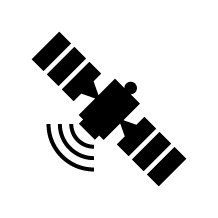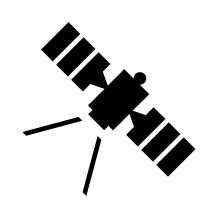Canada's Space Sector Industry Snapshot
© His Majesty the King in Right of Canada, as represented by the Minister of Innovation, Science and Industry, .
ISSN: 2818-5226
Background
- This snapshot, developed by the Canadian Space Agency (CSA) in collaboration with Space Canada, provides information about the space economy in Canada.
- The data is based on an annual voluntary survey led by the CSA and sent to space organizations in Canada. The facts and figures presented are limited to survey responses and supplementary internal information. The data collected remains confidential and protected by the CSA. It has not been shared with Space Canada in any way. This information is only made public in aggregate form.
- The report covers data for the year of .
- The numbers presented may not add up precisely to the totals provided because of rounding.
- Further details are set out in the CSA's State of the Canadian Space Sector Report that will be published on the CSA website: www.asc-csa.gc.ca/eng/publications/corporate.asp
Space Economy Ecosystem
Almost 200 organizations from across Canada are involved in the CSA's Annual Space Sector Survey.
| Large companies |
Universities & Research Centres |
Small and Medium-Sized Enterprises (SMEs) |
|
|---|---|---|---|
| Percentage | 5% | 22% | 73% |
| Ontario | Quebec | Prairies | British Columbia & North |
Atlantic | |
|---|---|---|---|---|---|
| Percentage | 40% | 29% | 12% | 11% | 8% |
Note: The North (Yukon, Northwest Territories, and Nunavut) have been integrated with B.C. due to the small number of respondents.
Contribution to the Economy
The space sector contributed $3.2B to Canada's GDPFootnote 1 – increasing 19% since .
| GDP | 0% | 7% | 0.4% | 6% | 19% |
|---|
Revenues
Space sector revenues totalled $5.0B
This includes:
 75% Satellite Communications
75% Satellite Communications  7% Earth Observation
7% Earth Observation  2% Space Science
2% Space Science  11% Navigation
11% Navigation  4% Space Exploration
4% Space Exploration  1% Other
1% Other
| Millions | $5,671 | $5,489 | $4,898 | $4,896 | $5,049 |
|---|
Domestic vs. Export Revenues
Of the total revenues:
- 60% ($3.0B) were from domestic sources.

- 40% ($2.0B) came from exports.

- The United States and Europe remain the most common export destinations.
| United States | 59% |
|---|---|
| Europe | 21% |
| Asia | 11% |
| South America | 5% |
| Other | 2% |
| Oceania | 1% |
| C. America, Caribbean, Mexico |
0.7% |
| Africa | 0.3% |
Workforce
The space sector supported over 25,236 jobs in Canada.
- Direct: 12,624 jobs most of which are STEMFootnote 2 (67%) and HQPFootnote 3 (68%).
- Indirect: 12,612 jobs.
The space sector gender breakdown includes 31% women; 69% men; 0.2% non-binary people.
| Administration | 20% |
|---|---|
| Students/Interns | 13% |
| Other (incl. Health Professionals) | 10% |
| Technicians | 8% |
| Management | 7% |
| Marketing and Sales | 4% |
| Engineers & Scientists | 38% |
Research and Development
Business expenditures for research and developmentFootnote 4 reached $593M – up 66% since .
The R&D intensity for space manufacturing was 13 times higher than the average for manufacturing in Canada.
Summary
In , Canada's space industry:
- Had almost 200 firms active across Canada generating $5.0B in revenues.
- Contributed $3.2B to Canada's GDP – increasing 19% since .
- Included 12,624 direct jobs in the space sector – of which 67% were STEM and almost 40% were engineers and scientists.
- Had $2.0B worth of exports, with the United States and Europe as primary destinations.
- Continues to advance technology with strong increases in BERD investment – up 66% since .
- Outperformed the broader Canadian manufacturing sector in terms of R&D manufacturing intensity by 13 times – demonstrating the innovative nature of the sector.